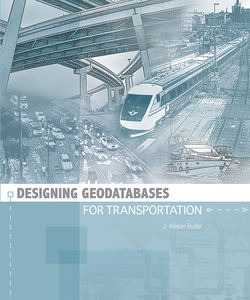Читать книгу Designing Geodatabases for Transportation - J. Allison Butler - Страница 10
Transport databases
ОглавлениеTransportation data is often specific to the various modes of transport. Designing Geodatabases for Transportation addresses six modes: walking, bicycling, motor highways, public transit (buses and commuter rail), railroads, and navigable waterways.1 All six modes involve linear facilities supporting point-to-point travel for people and material goods. The nature of the facility supporting travel and the way it is used differs with each mode. Some facilities support multiple modes of travel. Highways and roads accommodate motor vehicles, pedestrians, and bicycles. Railroads support commuter trains, long-distance passenger travel, and freight movement. Ships travel navigable waterways that flow under highway and railroad bridges.
Points of modal connection are commonly known as terminals, depots, stations, stops, and crossings. The name “intersection” is usually applied to highways, but conceptually includes other points where facilities cross and interact, such as railroad switches, crossovers, and diamonds; rail-highway grade crossings; and limited-access highway interchanges. Transport systems also include places where facilities cross but do not intersect, such as at bridges, viaducts, and tunnels.
Geographic information systems (GIS) for transportation—GIS-T in industry shorthand—routinely deal with mode- and function-specific applications, each with its own geodatabase design. What is rare is a GIS-T geodatabase that goes beyond serving the needs of a single application. Such a geodatabase must accommodate the many segmentation schemes employed and the various linear and coordinate referencing systems available to show where the elements, conveyances, and characteristics of transportation systems are located. Designing Geodatabases for Transportation shows you how to construct such an enterprise multimodal geodatabase, although the ideas presented in this book can be implemented for a single mode.
A transportation geodatabase addresses concerns beyond facilities and the services that use them. For example, facility elements and characteristics are affected by projects and activities that construct, maintain, and remove elements of the transportation system. There are also traffic crashes, bus routes, train schedules, and shipping manifests to consider.
Transportation applications are much too diverse for this book to present you with a complete transportation database design. That task is up to you. ESRI has successfully worked with user groups to develop a number of industry-specific data models. That approach will not work with transportation, which lacks a single, all-encompassing view of the industry due to its diversity. Not only are there modal differences to consider, but there are also differences in detail and abstraction. A trucking company, a city public-works division, and a state department of transportation (DOT) all need data about highways, but for their own purposes that require them to adopt very different data models. Even within a single transport agency there may be several different application-specific data models.
What this book offers is a collection of ideas and geodatabase design components to help you construct a model that serves your agency and its unique set of applications. It shows you a variety of ways to handle a specific data need, describing the pros and cons of each choice. In this way, Designing Geodatabases for Transportation provides a cafeteria of design options rather than a fixed menu to solve the broad range of transportation spatial data requirements.
